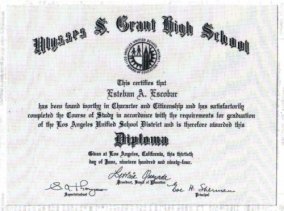Every year, thousands of people move to the United States to study or work. Some come for temporary employment, while others immigrate to the U.S. seeking permanent employment. All need to apply for and secure the correct visas for their stay and provide proof of their education or work experience.
If you graduated from a high school in your home country, you may wonder if your diploma will be valid in the U.S. The answer depends on multiple factors, including the standard of education in your home country and the many differences in international education systems.
Evaluating Foreign High School Diplomas
The most effective means of comparing your foreign high school diploma to U.S. educational requirements is to have the diploma evaluated. If you’re applying as a foreign student to a U.S. school, for instance, you have to provide proof of educational equivalency. A credential evaluation is also a helpful tool when looking for employment, as you can prove you meet the national standard for high school graduates.
To have your foreign high school diploma evaluated, you need to use a credential evaluation service. In the United States, credential evaluation is not the responsibility of a government agency. Instead, third-party credential evaluating services are hired by individuals, who submit copies of their diplomas and verified transcripts to the service.
You will need to contact your old high school and request copy, which proves you attended the school and completed the high school curriculum.
What If My High School Diploma is Not Equivalent to a U.S. Diploma?
It’s possible your diploma doesn’t meet every requirement under the U.S. education system for a high school equivalency. If this occurs, immigrants in the U.S. have a couple of options. One option is to take the GED test, or General Educational Development test. Anyone passing the GED receives a certificate of high school equivalency. While less valuable than a high school diploma, a GED is sufficient for many jobs, and it can be used to enroll in most community colleges. Before a student takes the GED, it would be beneficial for them to use use SpanTran: The
Evaluation Company to secure a credential evaluation. Evaluating their foreign degree will allow the student to see if they need to take additional steps to meet U.S. benchmarks.
Night school or continued education classes, in some cases, can make up the missing equivalencies for a U.S. high school diploma. You’d need to resubmit your diploma and the results of your continuing education class to a credential evaluation service a second time in order to receive documentation that your education meets U.S. high school standards.
Remember, credential evaluation doesn’t imply your home country’s education is less advanced than U.S. education systems. It simply means different countries value different educational results — and has inevitable differences.














